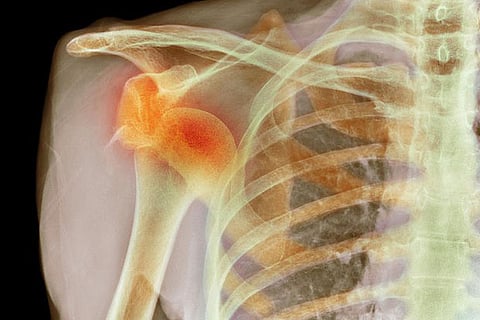

Chennai
However, technological advancements in the orthopedic space has changed the face of surgical interventions. From open surgeries to minimally invasive procedures like arthroscopy, treating shoulder instability has become simpler, effective, efficient and safer.
When the joint repeatedly slips out of place it leads to chronic shoulder instability. Reasons for the condition can vary from severe injury, fall or trauma, overuse of the joint to genetic disorders that cause joint loosening. Although more common amongst sports persons, the condition can affect anyone whose shoulder dislocation is not treated properly.
In severe cases, it can also result in visible deformity leading to a compromised quality of life. Therefore, it is important to consult an orthopedist who can help with accurate diagnosis through physical examination of the shoulder joint and an X-ray or MRI.
Medicos say that initial treatment includes painkillers, lifestyle modifications, physiotherapy to strengthen the shoulder muscles and hot and cold therapy to reduce pain and swelling. Earlier the diagnosis, better is the management of the condition. Sometimes, a sling or shoulder brace is recommended to temporarily stabilize the joint.
Arthroscopy is a one day care procedure and is being used by medicos in a large number of cases to diagnose and treat issues related to joints.
“Usually in a shoulder arthroscopy procedure, the surgeon makes 3-4 small incisions on the sides of the shoulder to repair the damaged tissues using tiny, specialized instruments. Through one of the incisions, a small camera called arthroscope is inserted to visualize the surgical area on a television screen. These unique instruments help a surgeon to access the precise site of damage, even in difficult areas, for implant fixation. Thereby reducing chances of implant failure and aiding in efficient movement of the shoulder joint post-surgery,” explains Dr Vijay Reddy, Orthopedic Surgeon, Apollo Hospitals.
Dr Vijay added that the benefits of this procedure range from less surgical pain and blood loss, fewer incisions, reduced trauma to surrounding soft tissues and less chances of infection. Physiotherapy plays a crucial role in rehabilitation of the shoulder ligaments post-surgery. It helps the patient in regaining the joint’s range of motion, strengthens the muscles around the joint to protect the shoulder from dislocation.
WARNING SIGNS
TREATMENT
Visit news.dtnext.in to explore our interactive epaper!
Download the DT Next app for more exciting features!
Click here for iOS
Click here for Android